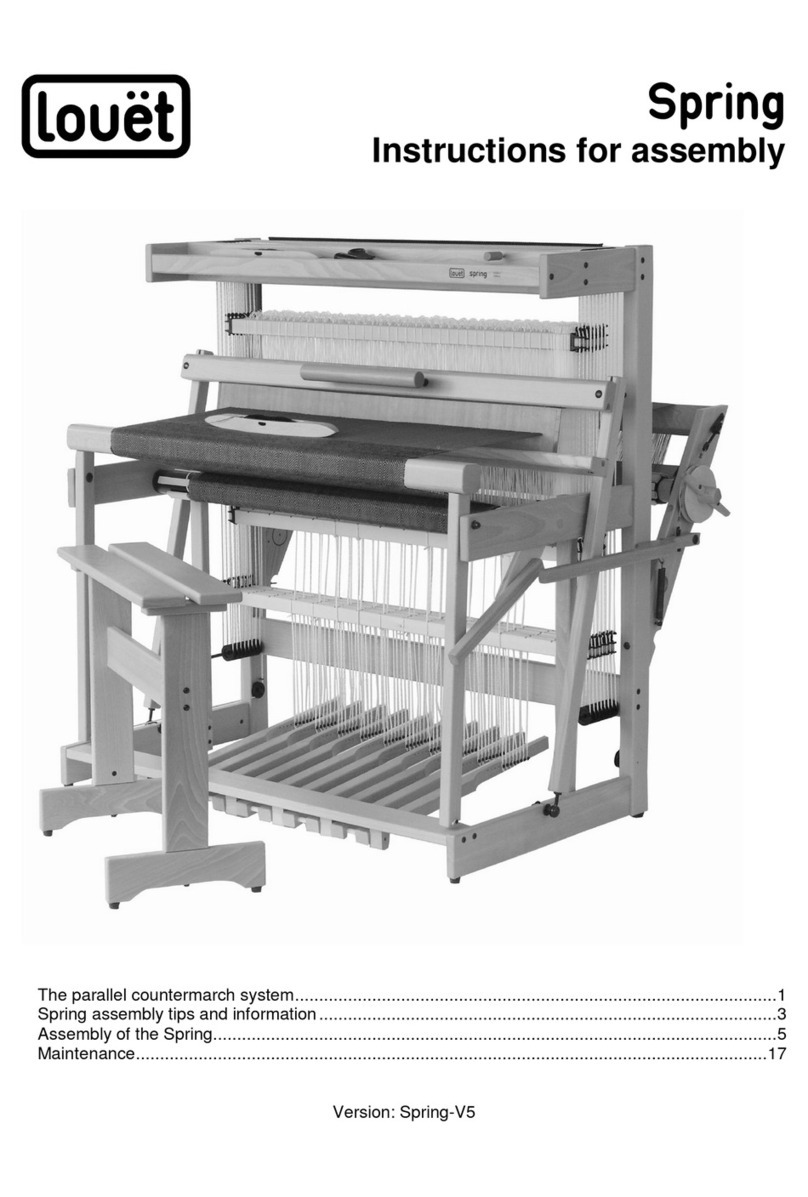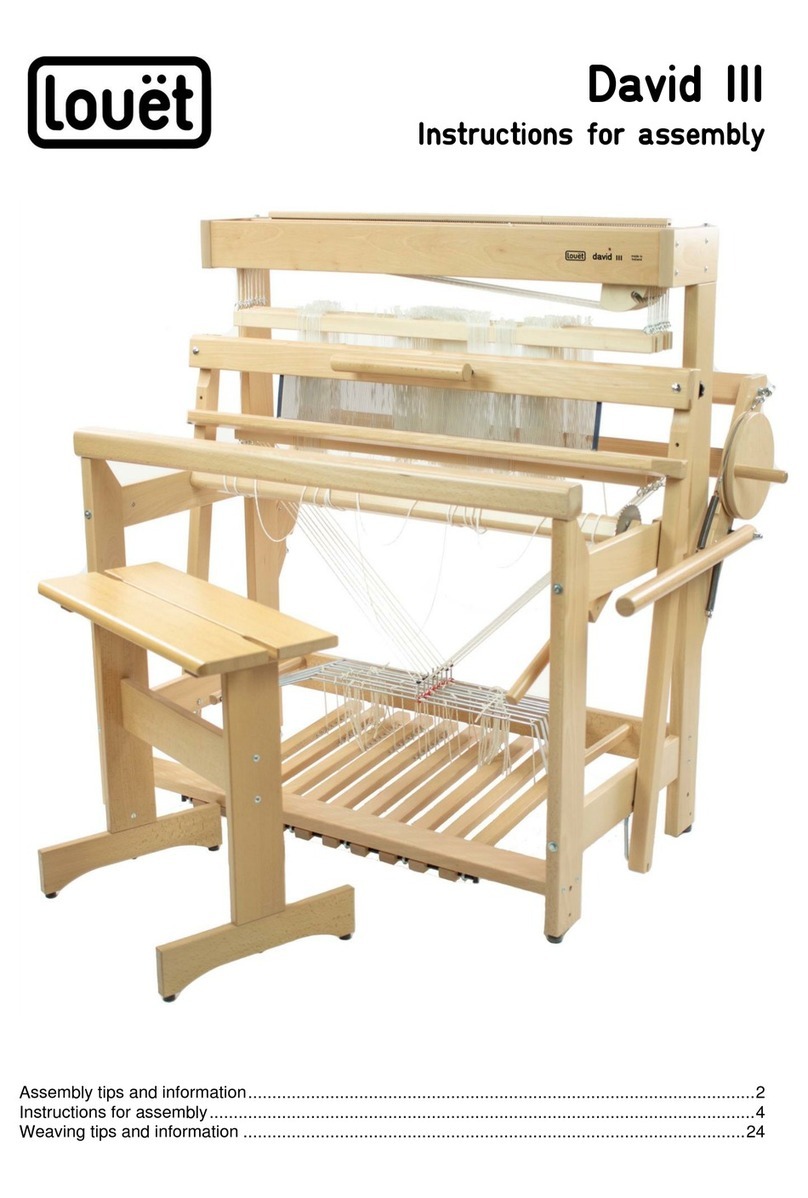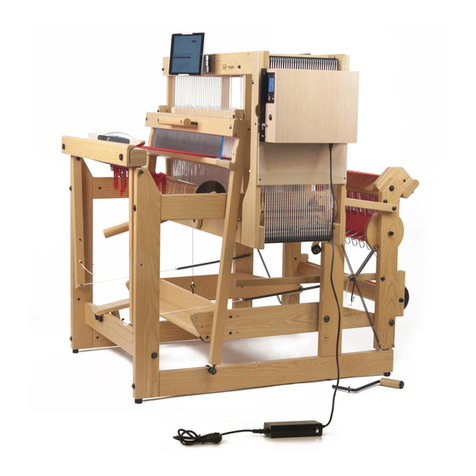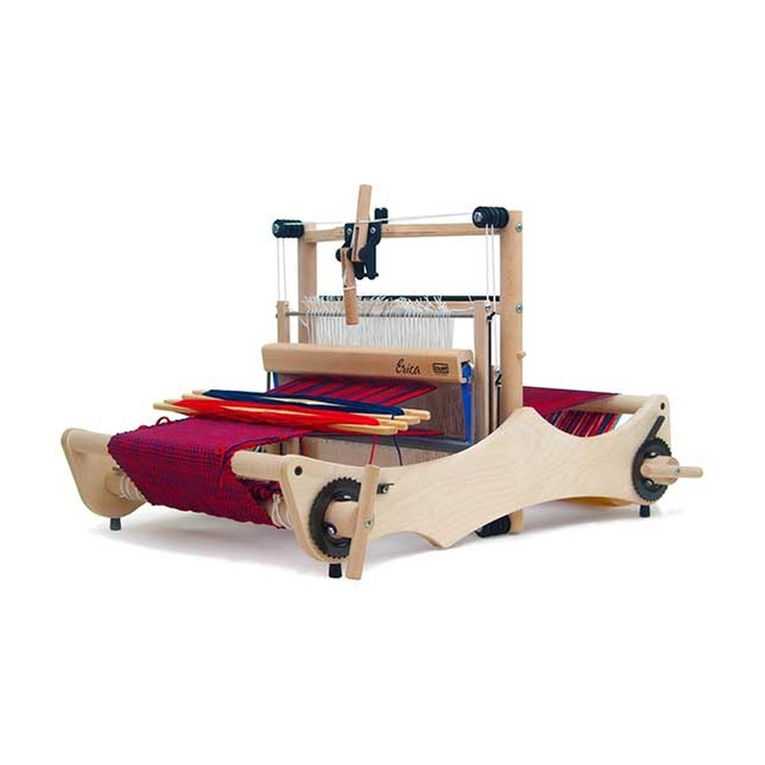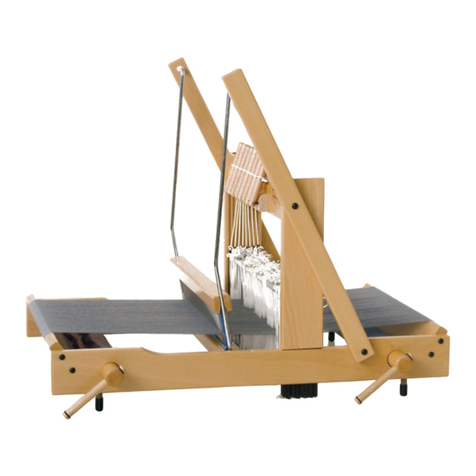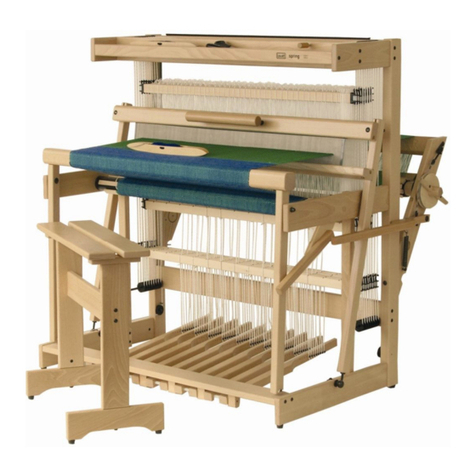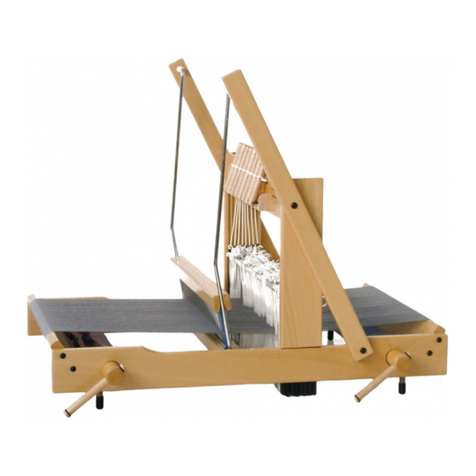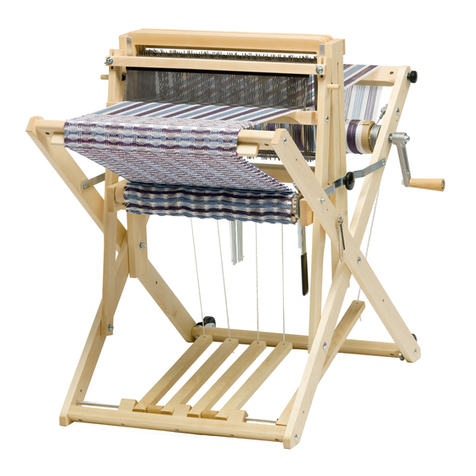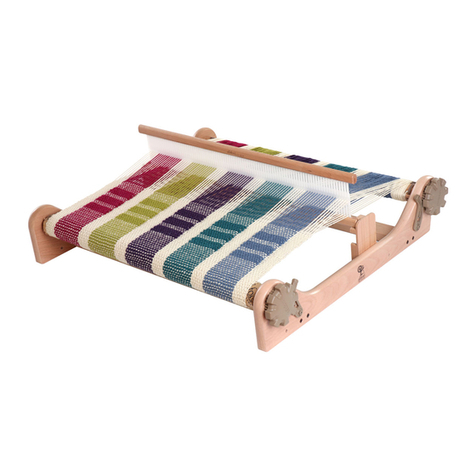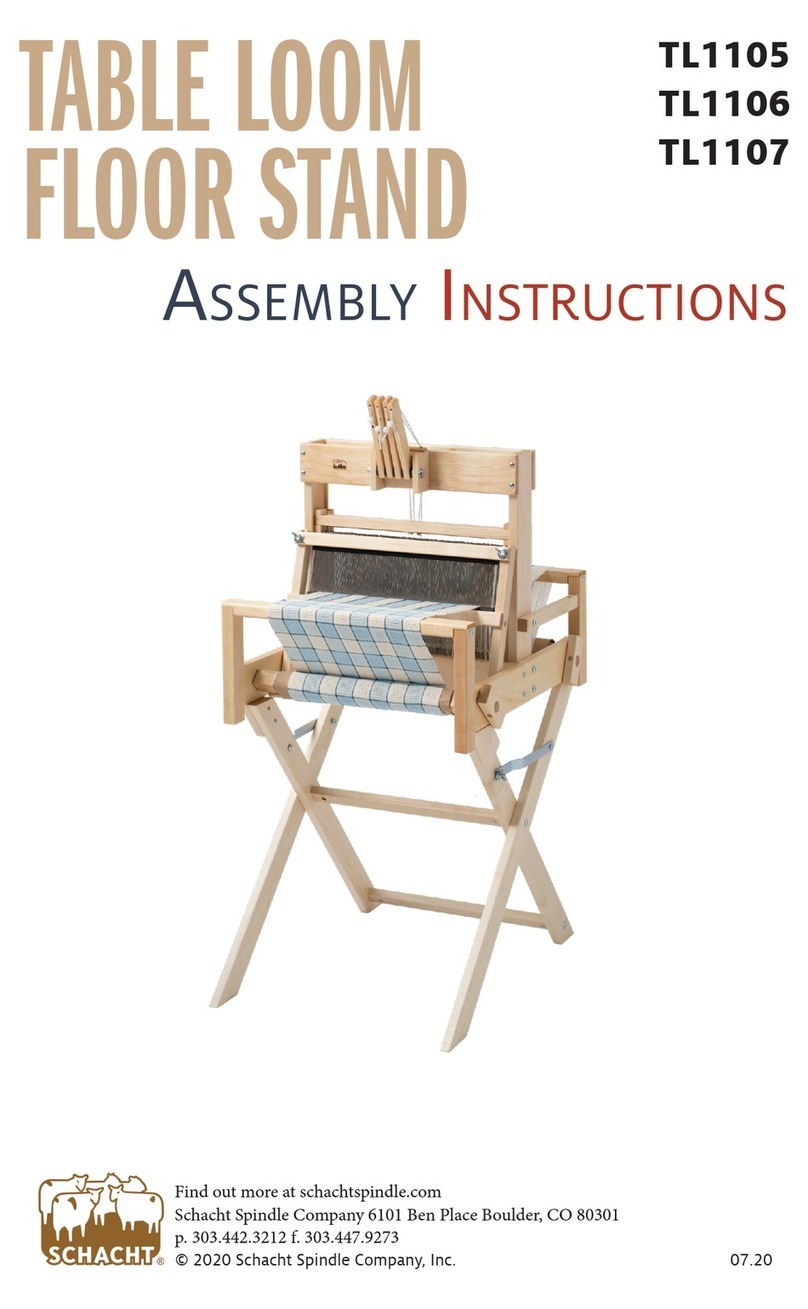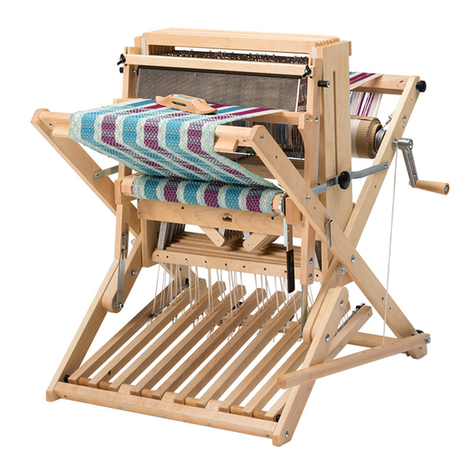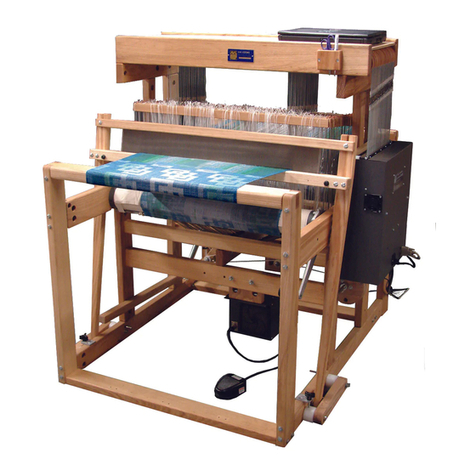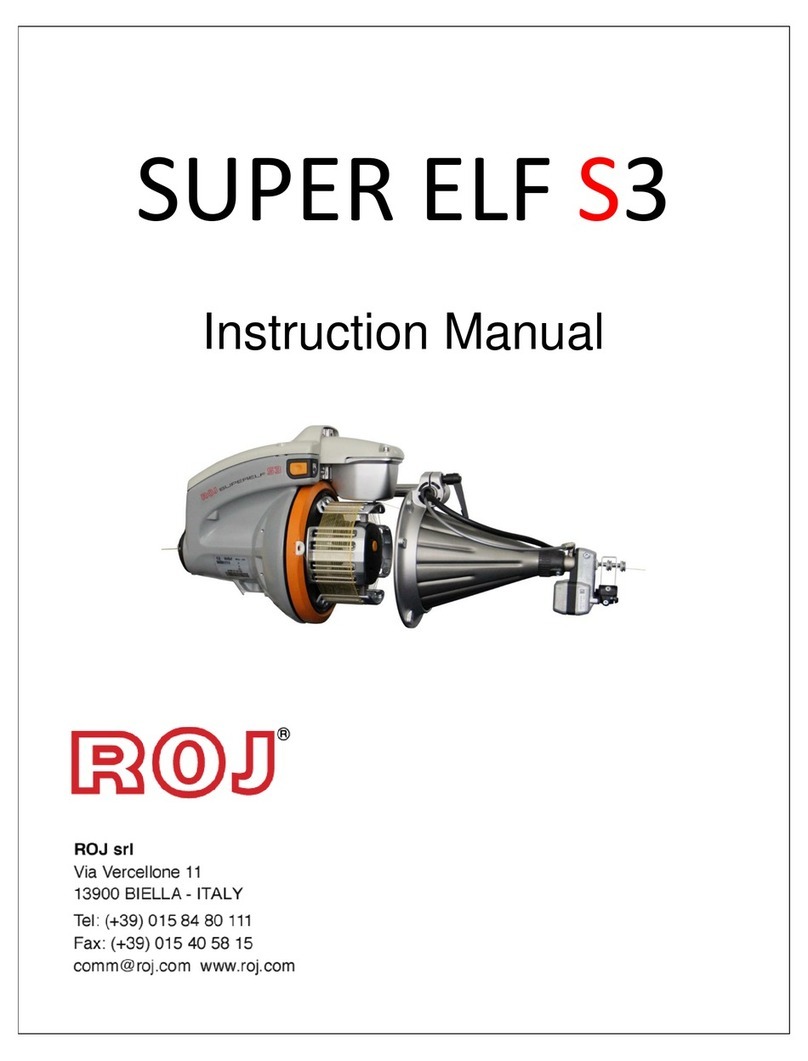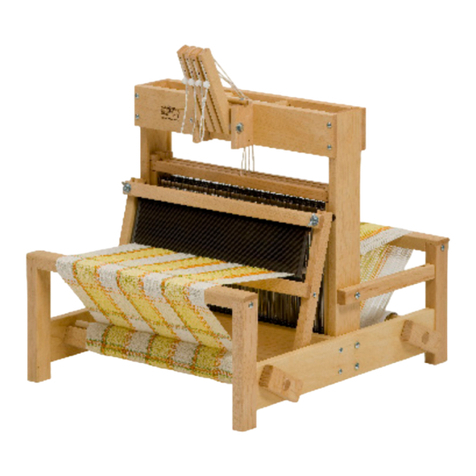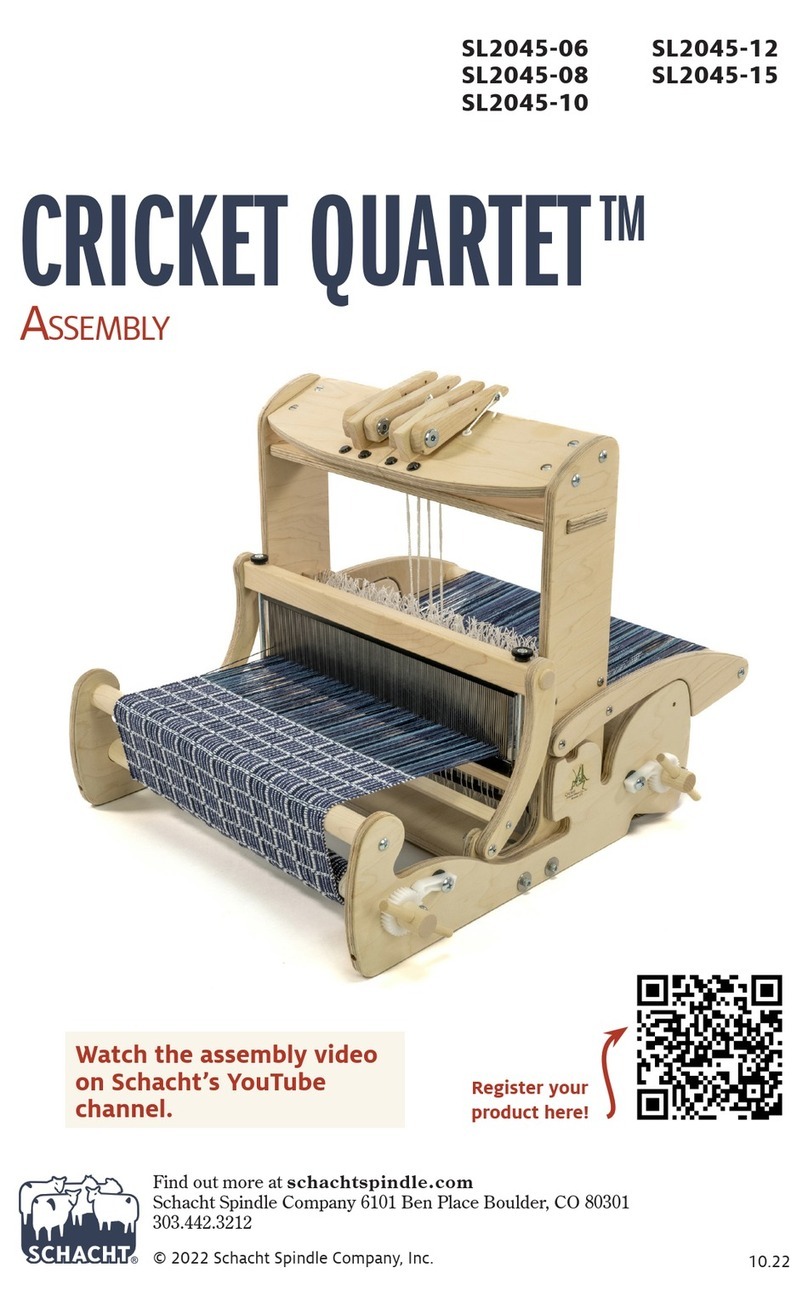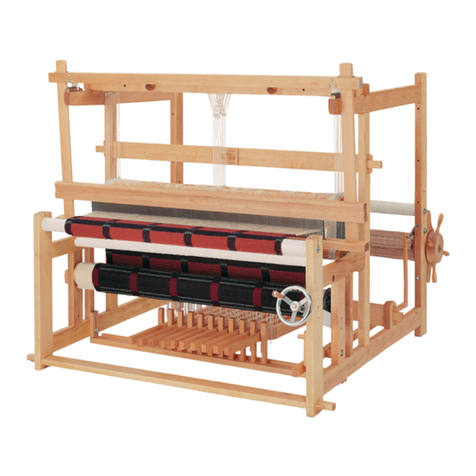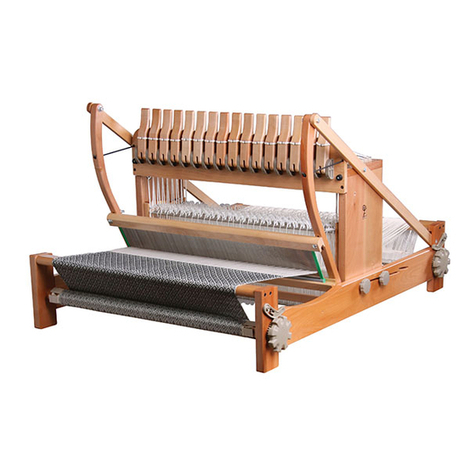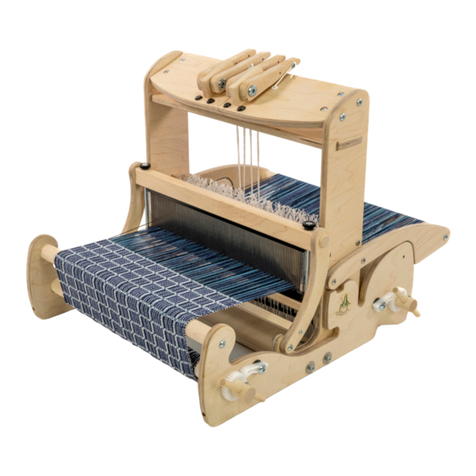Welcome to Your New Jane Loom
We know you’re going to love your new Jane! Louët is dedicated to bringing
you the most comfortable and enjoyable weaving experience. This manual
provides you with step-by-step assembly instructions, as well as some
commonly asked questions about usage.
A portion of your loom comes pre-assembled. In the below image, we have
labelled the parts and listed the Louët part numbers in parentheses.
1. Right diagonal castle support (HL0013)
2. Left diagonal castle support (HL0054)
3. Metal beater support (BZ0083)
4. Right side of base (HL0058)
5. Left side of base (HL0059)
6. Front beam (J40: HL0060, J70: HL0062, J50: HL0061)
7. Back beam (J40: HL0063, J70: HL0065, J50: HL0064)
8. Warp (or cloth beam) (J40: HL0066, J70: HL0068, J50: HL0067)
9. Top beater support (J40: HL0069, J70: HL0071, J50: HL0070)
10. Bottom beater support (J40: HL0072, J70: HL0074, J50: HL0073)
11. Right side of castle, vertical (J40: HL0075)
12. Left side of castle, vertical (J40: HL0078)

